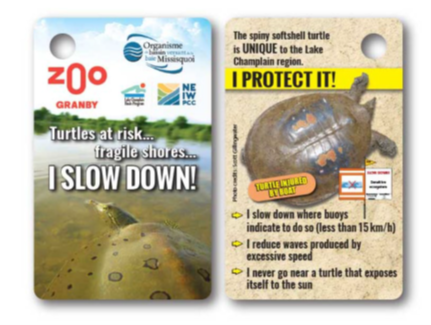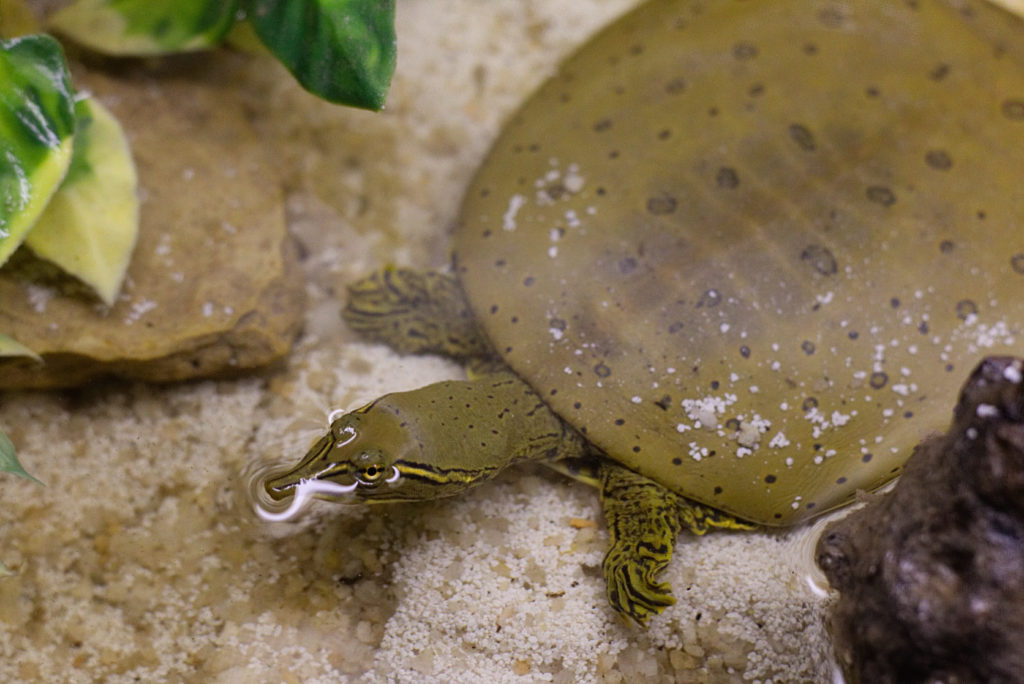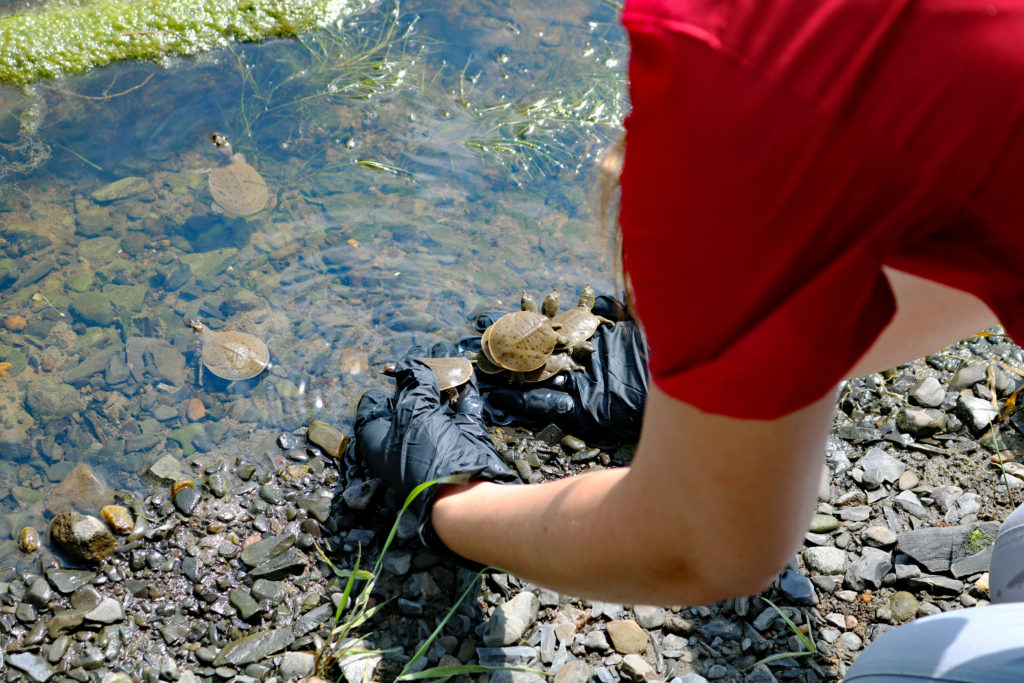
The Granby Zoo, located in Granby, Québec, launched a “spiny project,” using the threatened eastern spiny softshell turtle as the face of their public outreach and stewardship programs in communities along the northern portion of Lake Champlain in Québec. The Lake Champlain Basin Program (LCBP), a NEIWPCC program partner, funded the project.
“Using the iconic spiny softshell turtle as a water quality icon, staff from the Granby Zoo helped local residents learn about ecosystem health and the importance of good water quality,” said Colleen Hickey, LCBP education and outreach coordinator and NEIWPCC information officer. “These turtles swim quite fast and have been part of ongoing habitat and species restoration efforts in Québec for many years.”
One of just four turtle species that live in the waters of Lake Champlain in Québec , the spiny softshell is threatened by habitat and nesting grounds destruction as well as predation of eggs and hatchlings. It was state-listed as threatened in Vermont in 1987, nationally listed as threatened in Canada in 1991, and officially listed as threatened in Québec in 1999. With just 300 estimated adult and large juvenile turtles in Vermont, it has also been designated a Species of Greatest Conservation Need (high priority) in Vermont’s Wildlife Action Plan.

The project aimed to help protect this unique turtle by promoting riparian habitat protection measures as well as turtle- and lake-friendly practices by working with specific user groups in Québec. The turtle conservation tips included: reduce your boat speed while on the water; preserve habitats, vegetative buffer strips and fallen logs near the shore; and keep an eye out for turtles crossing the road, particularly during nesting season (June).
Municipal officials representing five communities attended a meeting to learn about and discuss ways to protect this freshwater species. Additionally, biologists from Granby Zoo worked closely with two waterfront landowners to conduct bird, bat, amphibian, and reptile inventories to inform stewardship guides for their property.
To reach members of the community, zoo biologists produced a four-part educational video series, and brought a live spiny softshell turtle to a lakeside community outreach event to further engage with and educate the public. They distributed educational awareness cards and floating keychains available in both French and English to boaters. Finally, they released nearly 200 turtle hatchlings born at the zoo across four events in collaboration with landowners, The Nature Conservancy Canada, and community members.

“The project also used social marketing efforts to share habitat and environmental messaging to specific audiences,” said Hickey. “The extent of outreach accomplished was a remarkable feat during COVID.”